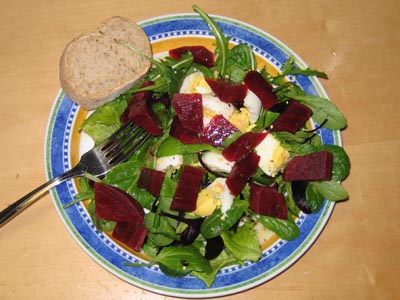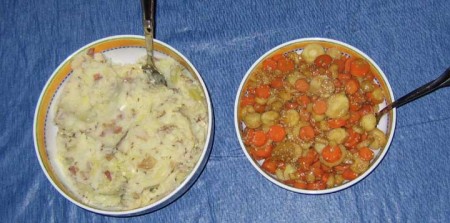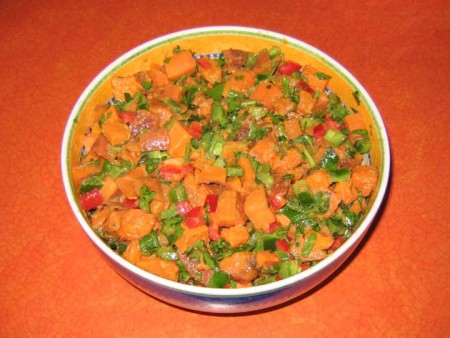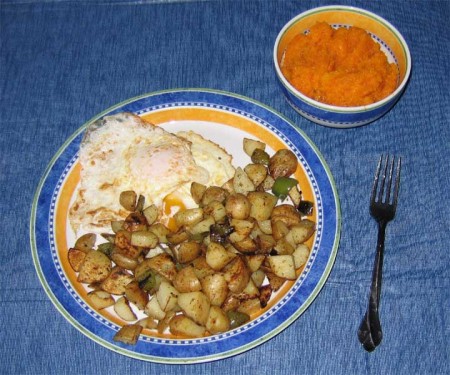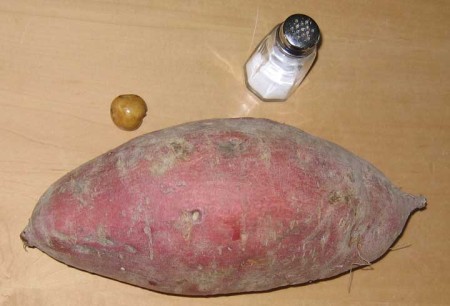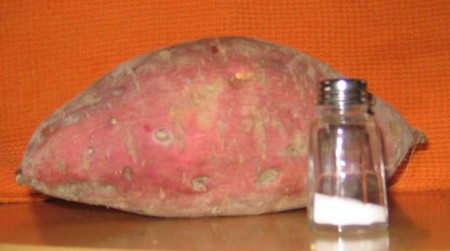Spring is my favorite season. I watch the plants in my neighborhood and on my walk to work to see how every day there are new shoots, new buds, new flowers, new leaves. In my own yard, I watch the progression from crocuses, to daffodils and tulips, to phlox, and then on to everything else. I watch the way that people, normally content in their bubbles of temperature-controlled homes, cars, and offices, open the windows or even come outside and notice it’s spring, temperatures are warming, things are growing. In New England, spring is so short. Maybe that’s why I treasure it all the more.
It’s now less than a month from the start of farmers markets in my area. We still have plenty of frozen vegetables (and two butternut squashes) to get us through. Especially if we’re as uninspired to cook as we have been. All through the CSA season, fresh vegetables coming in ever week inspire us to prepare them into meals. Because the vegetables are so fresh and so good, the meals can be quite simple and still delicious.
That all breaks down in the winter. I no longer know how to say “what I want for dinner tonight is…” and go out and assemble ingredients. I can, of course, reach into my freezer, pull out a baggie of vegetables at random, and prepare it however I normally prepare that vegetable. Somehow, though, I just haven’t been. Which isn’t to say we haven’t been cooking. It’s just that the vegetables are the frills, not the center, of our meals.
Some carrots from the veggie drawers and anaheim peppers (moderately spicy, frozen in week 19) from our freezer went into a huge batch of chili made from a mix of dried black, kidney, and pinto beans. The canned tomatoes that went in were from one agri-business or another, slightly better for being organic.
A small head of green cabbage, stored in our refrigerator from our winter CSA, became a stir-fry with some carrots and tofu. (Cabbages seem to store only about 2 1/2 months, not the 5 or 6 months it would have had to last from summer CSA or farmers market)
A bag of greens whose label had fallen off went into the skillet with cannelini, garlic, oil, lemon juice, salt, pepper, and sage, in what has become my husband’s signature dish for serving next to or over pasta. In a fun little challenge, we tried to identify the greens. We’ll never know if we’re right, but our conclusion was collard greens. When we froze them, we expected to use them in my usual way, the recipe given in week 30.
Sweet potatoes from our winter CSA with grocery store parsley left over from Passover became a batch of sweet potato salad in honey-mustard dressing, using the recipe in Moosewood Cooks at Home (photo in weeks 40-41).
My only really creative cooking recently was a quinoa dish. We hadn’t eaten quinoa in quite a while. It’s a seed that only sort of counts as a grain, very light, high in protein. I made a sort of pilaf. I toasted the quinoa with garlic and olive oil in the bottom of my saucepan briefly before adding water, dried basil and oregano, and chopped dried tomatoes (from Turkey, but bought at Rivermede Farm in week 31). After about 2/3 of the cooking time, I stirred in cut green beans from our freezer and some salt. I should have added pepper, too. It came out the wonderful trifecta of colorful, tasty, and healthy.
